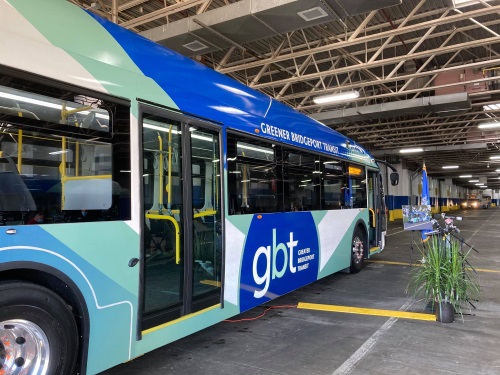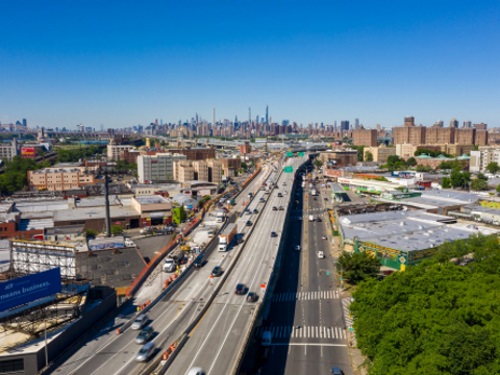A roundup of headlines curated for state transportation environmental professionals
FEDERAL ACTION
Elaine Chao: Long-Term Plan Needed for US Infrastructure – Transport Topics
White House Blocked C.D.C. From Requiring Masks on Public Transportation – New York Times
New York Transit Authority Taps Into Federal Reserve Borrowing Program – Pew
Where the 2020 Election Is a Referendum on Public Transit – CityLab
EPA Authority Over Power Sector’s Climate Impacts Heads to Court – Bloomberg Law
COVID-19
Mobility Analytics in the Era of the COVID-19 Pandemic – AASHTO Journal
Study: COVID-19 Changing Commuter Traffic Patterns – AASHTO Journal
Covid, science and urban legend – an interview with Greg Winfree – Traffic Technology International (Podcast)
Second phase of VDOT commuter survey open to help gauge coronavirus impact on travels – WAVY-TV
INFRASTRUCTURE RESILIENCE AND SUSTAINABILITY
Philadelphia’s traffic congestion was bad before the pandemic. It could get worse. – Philadelphia Inquirer
Washington DC airport operator unveils new sustainability plan – Airport World
Amazon to deploy 10K electric last-mile vans en route to net-zero carbon – Retail Dive
AIR QUALITY
Studies Examine Benefits, Hurdles of ‘Decarbonization’ Strategies – AASHTO Journal
San Diego Utility Company Launches Program to Build Charging Infrastructure – Transport Topics
Why Is the EPA Really Repealing Methane Emissions Regulations? – Sierra
Exxon’s Plan for Surging Carbon Emissions Revealed in Leaked Documents – Bloomberg Green
ENVIRONMENTAL JUSTICE
On equity, diversity, inclusion, and social justice in transportation – Roads & Bridges (Column)
For Some Near the Cross Bronx Expressway, COVID-19 is an Environmental Justice Issue, Too – The City
NJDEP Issues Environmental Justice Guidance for Entire New Jersey Executive Branch – Lexology
NATURAL RESOURCES
Cargill salt ponds subject to Clean Water Act protections, judge rules. – Climate Online
USDA Seeks New Partnerships to Safeguard, Restore Wetland Ecosystems – USDA’s Natural Resources Conservation Service
70th Annual Washington State Weed and Invasive Species Conference Going Virtual on November 3-6 – Big Country News
When it comes to our water quality ‘challenge the messenger’ – News-Press (Opinion)
Homes complicate Arizona wildfire response – Arizona Public Media
CULTURAL RESOURCES
After 25 years, Houston’s historic preservation law faces Supreme Court test – Community Impact Newspaper
HEALTH AND HUMAN ENVIRONMENT/ACTIVE TRANSPORTATION
New TRECH Project Research Update on Health Benefits of TCI Policy Scenarios – Harvard University
Missoula planners consider road safety improvements for bicycles, pedestrians – NBC Montana
Women have been biking in record numbers during the pandemic. As traffic returns, will they keep riding? – New York Times
Lime adds Wheels shared e-bikes to its app as it seeks to become a one-stop shop for mobility – The Verge
Bicycles And Buses Will Be Future’s Dominant Modes Of Urban Mobility, Predict 346 Transport Experts – Forbes
TRB RESOURCES/ANNOUNCEMENTS
Transportation’s Roles in Equitable Vaccine Allocation – TRB
TRB Webinar: Make it Count–Estimating Market Values for Small Airports – TRB
TRB Webinar: Wetland Mitigation at Airports – TRB
TRB Webinar: Finding the Path–Messaging Before, During, and After Weather Events – TRB
TRB Webinar: Advancing Innovative Automated Vehicles and Shared Mobility Research – TRB
FEDERAL REGISTER NOTICES
Competitive Funding Opportunity: Public Transportation COVID–19 Research Demonstration Grant Program – FTA (Notice of funding opportunity)
Port Access Route Study: Seacoast of New Jersey Including Offshore Approaches to the Delaware Bay, Delaware – Coast Guard
Request for Comment; Implementation Plan for the National Strategy for Ocean Mapping, Exploring, and Characterizing the United States Exclusive Economic Zone – NOAA (Notice of public comment)
Request for Information; Implementation Plan for the National Strategy for Mapping, Exploring, and Characterizing the United States Exclusive Economic Zone – NOAA (Notice of public comment)


